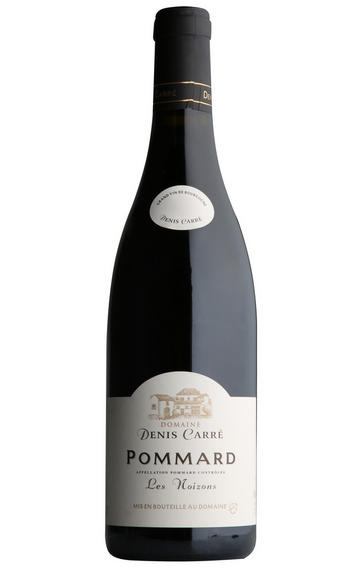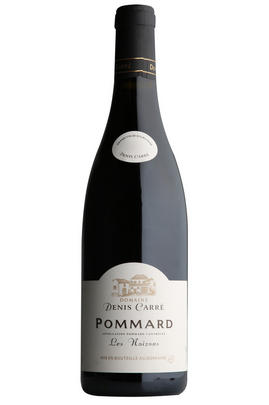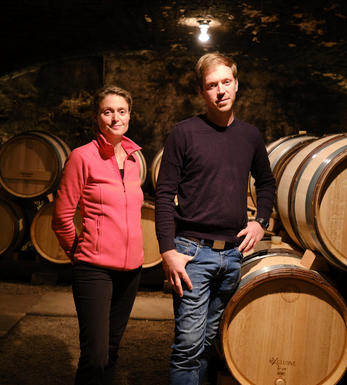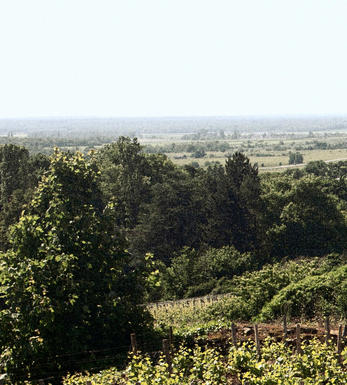
2019 Pommard, Les Noizons, Domaine Denis Carré, Burgundy
Add to wishlist

About this WINE

Domaine Denis Carre
Denis Carré did not inherit any vineyards, but – having harvested grapes as a teenager – he decided he wanted to make wine. He began renting vines, initially some Gamay and Pinot for three barrels of Passetoutgrains, while working in a garage in the evenings to fund his winemaking. He and his wife, Bernadette, slowly but surely added to their holdings, and the estate now totals 14 hectares across the Hautes Côtes and Côte de Beaune. Their children, Martial and Gaëtane, have been involved full-time since 2008, and now run the domaine.
Tucked away in Meloisey, in the Hautes Cotes de Beaune, this small family domaine has so far remained relatively under the radar, but the recent change of generation has seen their reputation grow. This is largely thanks to their careful work in the vineyards, which is geared towards achieving the best quality possible, as well as a sensible approach to winemaking, which focuses on producing accessible wines with fresh, clean, fruit profiles. Gaëtane and Martial are thoughtful, energetic and smart, understanding that wine is made to be drunk and enjoyed, and their focus is on making wines that give pleasure when young, but also have the potential to age gracefully. Everything is focused on preserving purity of fruit; a maximum of 25% new oak is used on the top wines, while the Pinot Noir is all de-stemmed, extraction is gentle and bâtonnage is avoided. Many of their parcels are at relatively high altitude, and the cool location of the Hautes Côtes gives their wines real energy and freshness.

Pommard
The most powerful red wines of the Côte de Beaune emanate from Pommard, where complex soils with a high proportion of iron-rich clay produce deep-coloured, relatively tannic wines. A Pommard that is ready to drink in its first few years is probably not going to be a great example of the appellation.
Two vineyards stand out: the lower part of Les Rugiens, which has been mooted for promotion to Grand Cru status, and the five-hectare, walled Clos des Epéneaux, monopoly of Comte Armand.- 212 hectares of village Pommard
- 125 hectares of Premier Cru vineyards (28 in all). The finest vineyards include Les Rugiens, Les Epénots (including Clos des Epéneaux) and Pézérolles
- Recommended producers: Comte Armand, de Montille, de Courcel, J-M Boillot

Pinot Noir
Pinot Noir is probably the most frustrating, and at times infuriating, wine grape in the world. However when it is successful, it can produce some of the most sublime wines known to man. This thin-skinned grape which grows in small, tight bunches performs well on well-drained, deepish limestone based subsoils as are found on Burgundy's Côte d'Or.
Pinot Noir is more susceptible than other varieties to over cropping - concentration and varietal character disappear rapidly if yields are excessive and yields as little as 25hl/ha are the norm for some climats of the Côte d`Or.
Because of the thinness of the skins, Pinot Noir wines are lighter in colour, body and tannins. However the best wines have grip, complexity and an intensity of fruit seldom found in wine from other grapes. Young Pinot Noir can smell almost sweet, redolent with freshly crushed raspberries, cherries and redcurrants. When mature, the best wines develop a sensuous, silky mouth feel with the fruit flavours deepening and gamey "sous-bois" nuances emerging.
The best examples are still found in Burgundy, although Pinot Noir`s key role in Champagne should not be forgotten. It is grown throughout the world with notable success in the Carneros and Russian River Valley districts of California, and the Martinborough and Central Otago regions of New Zealand.
When is a wine ready to drink?
We provide drinking windows for all our wines. Alongside the drinking windows there is a bottle icon and a maturity stage. Bear in mind that the best time to drink a wine does also depend on your taste.
Not ready
These wines are very young. Whilst they're likely to have lots of intense flavours, their acidity or tannins may make them feel austere. Although it isn't "wrong" to drink these wines now, you are likely to miss out on a lot of complexity by not waiting for them to mature.
Ready - youthful
These wines are likely to have plenty of fruit flavours still and, for red wines, the tannins may well be quite noticeable. For those who prefer younger, fruitier wines, or if serving alongside a robust meal, these will be very enjoyable. If you choose to hold onto these wines, the fruit flavours will evolve into more savoury complexity.
Ready - at best
These wines are likely to have a beautiful balance of fruit, spice and savoury flavours. The acidity and tannins will have softened somewhat, and the wines will show plenty of complexity. For many, this is seen as the ideal time to drink and enjoy these wines. If you choose to hold onto these wines, they will become more savoury but not necessarily more complex.
Ready - mature
These wines are likely to have plenty of complexity, but the fruit flavours will have been almost completely replaced by savoury and spice notes. These wines may have a beautiful texture at this stage of maturity. There is lots to enjoy when drinking wines at this stage. Most of these wines will hold in this window for a few years, though at the very end of this drinking window, wines start to lose complexity and decline.
Read more about the way wine ages


Buying options
Add to wishlist
Description
Les Noizons is higher than the rest of Pommard, just above the Premier Cru Pézerolles. Its pebbly soils reflect heat, the cooler microclimate making the wine light on its feet: Gaëtane calls it “pretty”. It’s got a darker fruit profile, and typical aromas of earthy spice; there are silky tannins and a cooling, mineral finish. Drink 2022 to 2028.
wine at a glance
Delivery and quality guarantee